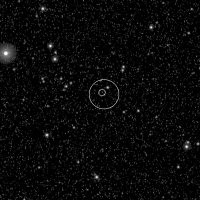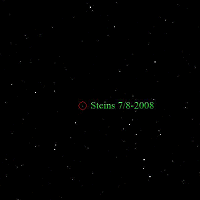Optical navigation campaign off to a good start
19 August 2008
Rosetta's on-board cameras have successfully started to visually track asteroid Steins in an optical navigation campaign. The images have been used to calculate the asteroid's location and to optimise Rosetta's trajectory for the upcoming fly-by of the asteroid on 5 September 2008.The optical navigation campaign started on Monday 4 August, with Rosetta still about 26 million kilometres from Steins. Unexpectedly, the two navigation cameras (NAVCAM A & B) were able to detect the asteroid already from day one of the campaign. Initially it was thought that in the early phase of the campaign only the OSIRIS instrument would be able to observe the asteroid.
 |
 |
|
NAVCAM A image of asteroid Steins, 4 August 2008 |
OSIRIS images of asteroid Steins, 7 and 11 August 2008 |
The data gathered by both the NAVCAMs and the OSIRIS instrument have been used to refine the model of the asteroid's orbit and to determine the required delta-V of the trajectory control manoeuvre (TCM) that was successfully performed on 14 August. The TCM has refined Rosetta's course close to the desired fly-by conditions: 800 km distance from Steins at closest approach on 5 September.
The optical navigation campaign will continue up to the fly-by, with several slots set between now and 4 September for possible future manoeuvres, should they be required.
For more details see the ESA Portal release.

